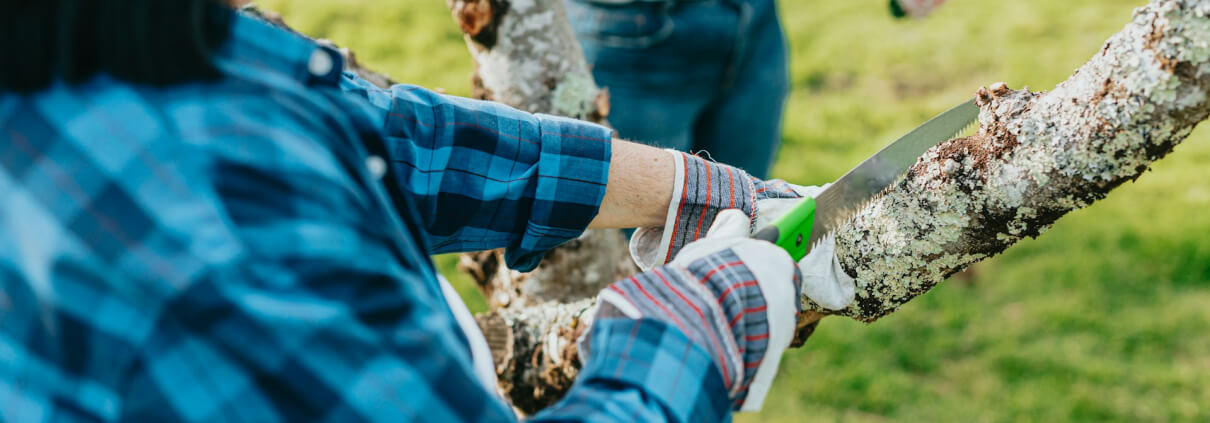Best Practices for Safe Tree Lopping at Home
Tree lopping at home can be a rewarding task, offering the chance to shape and care for your garden’s growth. It allows you to remove unhealthy branches and promote healthier trees, ensuring they add charm to your landscape. However, lopping trees safely is key to preventing accidents and maintaining the well-being of your property.
Safety should always be a priority when working with trees. By using the right tools and methods, you can avoid common pitfalls and protect both yourself and your surroundings. Preparing thoroughly and following best practices ensures that your tree lopping activities are safe and effective, allowing your garden to thrive beautifully.
Understanding Tree Lopping and Its Importance
Tree lopping is an essential practice in maintaining the health and appearance of trees. It involves cutting and removing branches to manage growth, improve shape, and reduce risks. While it might seem straightforward, lopping is crucial for several reasons.
Firstly, it improves safety around your home. Overgrown branches can become hazardous, especially in strong winds, posing a threat to buildings and people. By regularly lopping trees, you prevent branches from reaching problematic sizes.
Secondly, lopping promotes better tree health. Removing damaged or diseased branches stops infections from spreading to healthier parts. This helps the tree grow stronger and more resilient.
A well-lopped tree can also enhance your property’s appearance, adding to its aesthetic value. Trees with a well-maintained shape contribute positively to your landscape, making it more visually appealing.
Moreover, lopping helps trees get more sunlight and air circulation, which is vital for photosynthesis and growth. Without this, trees might struggle to thrive, affecting their overall condition.
Finally, proper tree lopping ensures that your trees grow in a controlled manner, preventing overcrowding and ensuring each tree has enough space to develop fully. Understanding tree lopping’s importance is key to enjoying a safe and attractive landscape, offering both practical and aesthetic benefits.
Essential Tools and Equipment for Safe Lopping
To perform tree lopping safely and effectively, it’s important to use the right tools. Having the correct equipment not only makes the job easier but also ensures accuracy and safety. Here’s a list of essential tools you’ll need:
1. Chainsaw: Essential for cutting larger branches. It’s important to ensure the chainsaw is well-maintained and sharp.
2. Pole Saw: Ideal for reaching higher branches without the need for a ladder. This tool helps you safely trim branches that are out of reach.
3. Pruning Shears: Great for smaller branches and twigs. They provide precision for detail work on younger, thinner branches.
4. Loppers: With long handles, loppers offer increased leverage, allowing you to cut medium-sized branches with ease.
5. Safety Gear: Always wear a sturdy helmet, gloves, goggles, and boots. These protect you from falling debris and potential accidents.
6. Rope: Useful for controlling the fall of heavy branches. It helps guide branches safely to the ground, minimising damage and risk.
Step-by-Step Guide to Lopping Trees Safely
Lopping trees safely requires a systematic approach that ensures both the health of the tree and the safety of those involved in the process. Here is a simple guide to help you carry out tree lopping effectively:
1. Plan the Lop: Before you start, plan which branches need removal. Focus on dead, diseased, or overgrown branches that could pose a risk. Identify safe zones for debris to fall and make sure the area is clear of people and obstacles.
2. Wear Safety Gear: Equip yourself with essential safety gear. This includes a hard hat, gloves, safety goggles, and sturdy boots. These protect against falling branches and other hazards.
3. Examine the Tree: Walk around the tree to check for splits in the trunk or branches. Consider wind direction and strength, as they can affect branch drops.
4. Cut Methodically: Always start by cutting smaller branches before tackling larger ones. Use a three-cut method for larger branches to prevent tearing. Make an undercut on the branch, followed by a top cut further out, and finally a complete cut near the trunk.
5. Take Breaks: Regularly step back to review your progress. This helps you stay on track with your lopping plan and reduces fatigue.
6. Finish with Clean-Up: After lopping, tidy up the site. Remove debris and ensure tools are stored properly.
Common Mistakes to Avoid and Safety Tips
Even with the best intentions, mistakes during tree lopping are common. These errors can lead to inefficient work or potential hazards. Here are some mistakes to avoid and safety tips to keep in mind:
1. Neglecting Tool Maintenance: Using dull or faulty tools increases effort and risk. Regularly inspect and sharpen tools to ensure they work efficiently.
2. Ignoring Weather Conditions: Bad weather can make tree lopping dangerous. Strong winds or rain can destabilise branches or reduce visibility, so always check the forecast before starting.
3. Over-Pruning: Removing too many branches or large sections can weaken the tree, affecting its health and structure. Be cautious, and take away only what’s necessary.
4. Incorrect Ladder Use: Ladders should be secure and placed on stable ground. Use the right ladder for the tree’s height and follow safe practices when climbing.
5. Forgetting Safety Gear: Never skip wearing protective gear. Safety helmets, goggles, and gloves are non-negotiable for effective protection.
6. Working Alone: It’s safer to work with someone who can assist or call for help if needed. Having a companion ensures you have support in case of an emergency.
7. Failing to Identify Risks: Understanding the tree’s condition is vital. Overlooked hazards, like weak spots or power lines, can make lopping dangerous.
Conclusion
Tree lopping is a crucial practice for maintaining healthy and well-managed trees on your property. You ensure that lopping is done effectively by understanding the importance of careful planning, using the right tools, and following safe procedures. Avoiding common mistakes means you protect yourself and your trees, keeping your environment safe and thriving. Proper tree lopping manages growth efficiently and prevents future hazards, providing long-term benefits to your landscape.
If tree lopping seems like a daunting task, or if you’d like professional assistance, TPS Tree Services is here to help. Our skilled team, equipped with the right tools and expertise, can manage all your tree-lopping needs safely and efficiently. Contact TPS Tree Services to ensure your trees are healthy and your property is safe, giving you peace of mind throughout the year.




